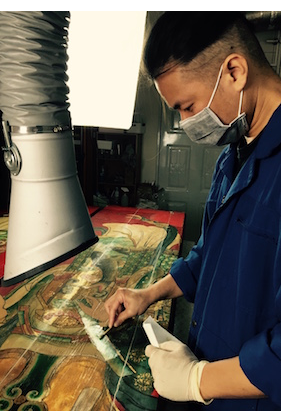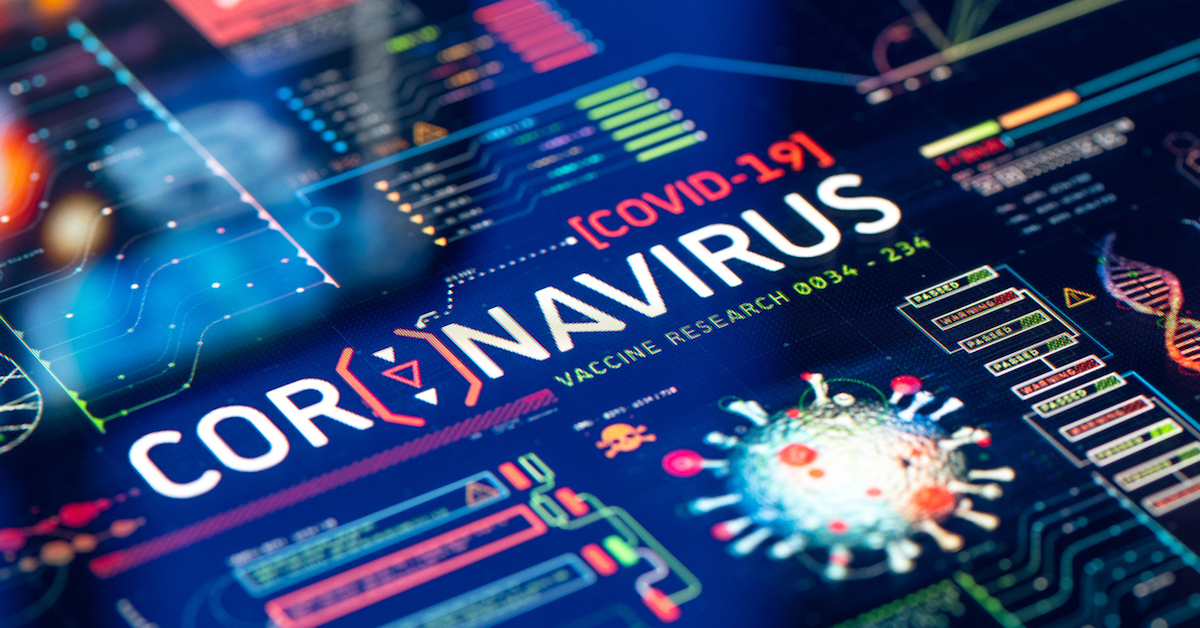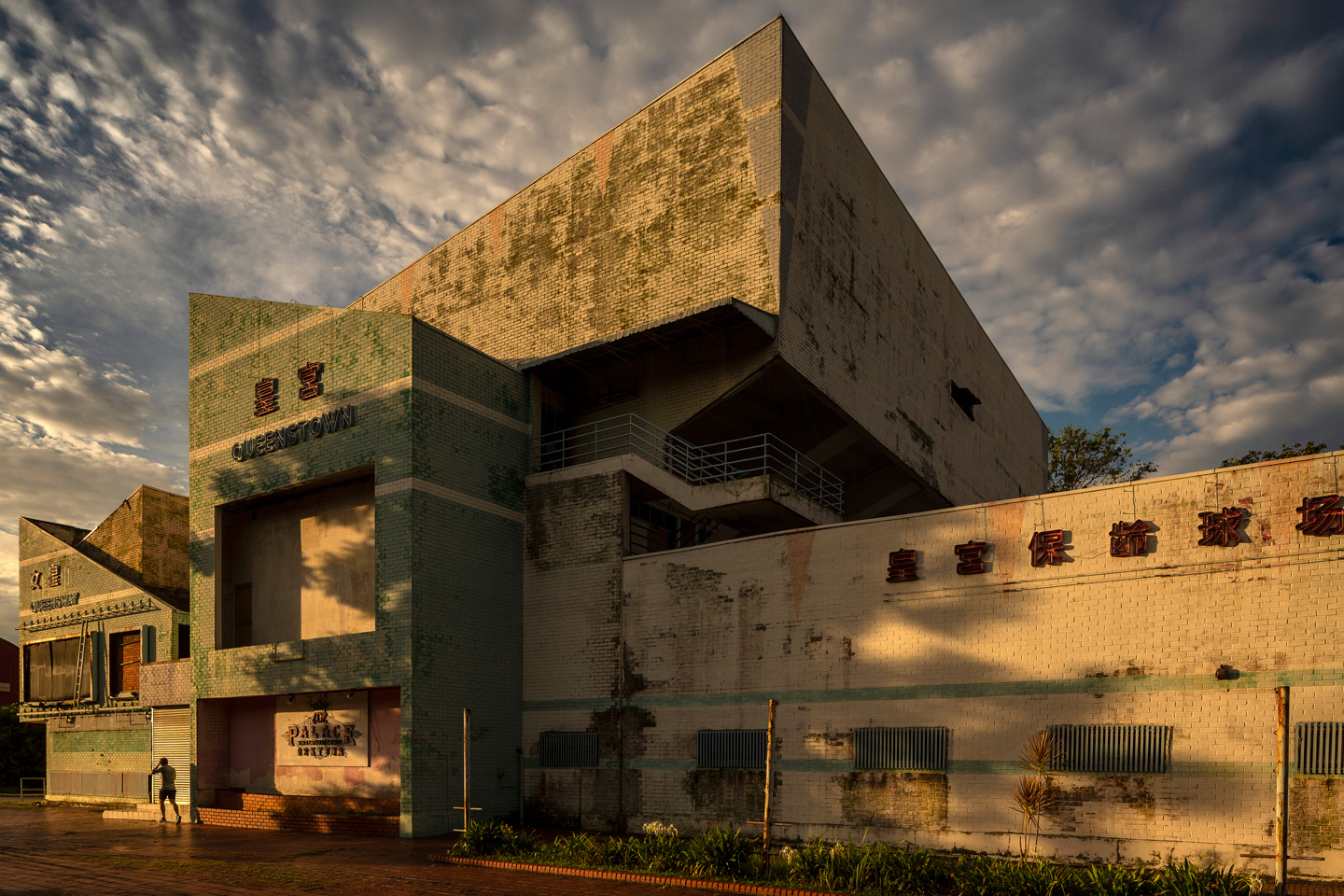 The importance of art restoration has never been as well-understood in Taiwan as it is now, since Leo Tsai came into the spotlight two years ago. In summer 2015, he famously restored a 17th-century painting, Flowers, after a 12-year-old boy accidentally tore a hole in the $1.5 million USD artwork in Taipei, drawing wide attention both locally and internationally.
The importance of art restoration has never been as well-understood in Taiwan as it is now, since Leo Tsai came into the spotlight two years ago. In summer 2015, he famously restored a 17th-century painting, Flowers, after a 12-year-old boy accidentally tore a hole in the $1.5 million USD artwork in Taipei, drawing wide attention both locally and internationally.
Contrary to public perception, art restoration is not about overpainting, but is a highly complex discipline which extensively involves various types of technology. For example, without the infrared radiation to detect what lies beneath the paints in a non-destructive manner, an artwork’s original structure and intent cannot be unveiled without damage. And without the technology to manage, transfer, store and archive the various details of an artwork — as a doctor might do for his or her patients’ medical records — art conservators wouldn’t be able to efficiently restore the work to its true original beauty.
When Tsai returned to Taiwan after years of studying and working alongside art restoration masters overseas, he noticed that the importance of establishing a data library for the art restoration process wasn’t well understood in his hometown. “I was surprised to learn that the restoration equipment used in Taiwan was, in many cases, newer and more advanced than those in Europe,” Tsai said. “However, there were fewer art conservators who appreciate the importance of recording and archiving every piece of information generated or gathered during the restoration process carefully.”
Data library: the key to preserving the artwork, and the soul within
Tsai sees a well-established data library as the key to successful art restoration, as the archived data can provide an efficient, clear, and multifaceted view into the fundamental elements an art conservator requires. If one does not rigorously and intentionally store the details from the art conservators’ diagnoses, the methods applied, analyses and insights, art restoration will not be able to fulfill its goal: capturing the art’s true originality. Moreover, the authenticity of the piece can be lost due to subjective judgments by different restorers over time. Tsai has witnessed this happening to several beautiful temples across Taiwan in the past. Hence along his journey of restoring cultural assets in Taiwan, Tsai is also focused on a mission to advocate the importance of developing a comprehensive data library as a consistent part of the art restoration process.
Take Tsai’s team for example. During the restoration process, every detail they collect will be stored in their storage devices, including data gleaned from the various stages of cleaning, analysis and restoration. For instance, the condition and material of every painting is different, which results in different cleaning methods. Hence, recording which chemical solvent can be used to remove the dirt effectively while keeping the original painting intact is critical for prolonging the life of the artwork.
“An important role of a well-established data library lies in guesswork prevention,” Tsai said. When the details on a historic image are unclear, modern assumptions on the part of a conservator about the setting, clothing or even a subject’s facial structure can lead to a distortion of the original image and its history. But now, he said, technology is playing an increasing role, “resulting in restored works that are closer to the originals than in the past.”
Tsai reveals his vision and his process in this short video:
Data management is an important task for art conservators
A big portion of Tsai’s data consists of hundreds of photos taken by advanced cameras with various angles, different lighting, zoom-ins and -outs and more. With each artwork, more than 500 photos are taken during the restoration process, with each photo as large as 50 MB. It’s an important task to back up these photos every day, in multiple hard drives as well as in the cloud, and it does require time — but the process can be reasonably simple when built into the daily process.
 “No matter how wearisome it can be, backup is something that we never compromise on. In the past, we used to purchase new hard drives constantly due to the astonishing amount of data we create daily. Now with the high capacities, advanced interface technologies and reliability of our Seagate Backup Plus Hub and LaCie Rugged portable drives, organizing scattered data has never been easier for me and my team, allowing us to work on what is most important while we race against time to rescue damaged art.”
“No matter how wearisome it can be, backup is something that we never compromise on. In the past, we used to purchase new hard drives constantly due to the astonishing amount of data we create daily. Now with the high capacities, advanced interface technologies and reliability of our Seagate Backup Plus Hub and LaCie Rugged portable drives, organizing scattered data has never been easier for me and my team, allowing us to work on what is most important while we race against time to rescue damaged art.”
Over the years, both private and public sector organizations have come to appreciate Leo’s dedication and many are providing him support through various initiatives. Increased understanding of the importance of building a comprehensive data library during the art preservation process has also led to more art galleries and museums across Taiwan adopting Tsai’s specific data library format and methods. In Tsai’s vision, a large-scale and systematic approach for storing and managing important data for art restoration can help Taiwan’s art preservation scene thrive in the years ahead.
“However, before we reach that stage, it is important to establish the fundamental understanding of art preservation and the significant role data storage plays within it,” Tsai added.
—
All photos courtesy of: TSJ Art Conservation and Restoration







